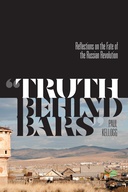Explore

Just north of the Arctic Circle is the settlement of Vorkuta, a notorious camp in the Gulag internment system that witnessed three pivotal moments in Russian history. In the 1930s, a desperate hunger strike by socialist prisoners, victims of Joseph Stalin’s repressive regime, resulted in mass executions. In 1953, a strike by forced labourers sounded the death knell for the Stalinist forced labour system. And finally, in the late 1980s and early 1990s, a series of strikes by new, independent miners’ unions were central to overturning the Stalinist system.
Paul Kellogg uses the story of Vorkuta as a frame with which to re-assess the Russian Revolution. In particular, he turns to the contributions of Iulii Martov, a contemporary of Lenin, and his analysis of the central role played in the revolution by a temporary class of peasants-in-uniform. Kellogg explores the persistence and creativity of workers’ resistance in even the darkest hours of authoritarian repression and offers new perspectives on the failure of democratic governance after the Russian Revolution.
This book is included in DOAB.
Why read this book? Have your say.
You must be logged in to comment.
Rights Information
Are you the author or publisher of this work? If so, you can claim it as yours by registering as an Unglue.it rights holder.Downloads
This work has been downloaded 111 times via unglue.it ebook links.
- 111 - pdf (CC BY-NC-ND) at Unglue.it.
Keywords
- Arctic Gulags
- Authoritarianism
- Bolsheviks
- bolshevism
- Gulag
- HBTV4
- Hunger strikes
- Leftists
- Lenin
- Martov
- Mensheviks
- Miners Union
- Oral Newspaper
- Russian Revolution
- Socialism
- Solzhenitsyn
- Stalinism
- Substitutionism
- The Great Purge
- The Great Terror
- Trotsky
- Vorkuta
- Workers Resistance
Links
DOI: 10.15215/aupress/9781771992459.01Editions

